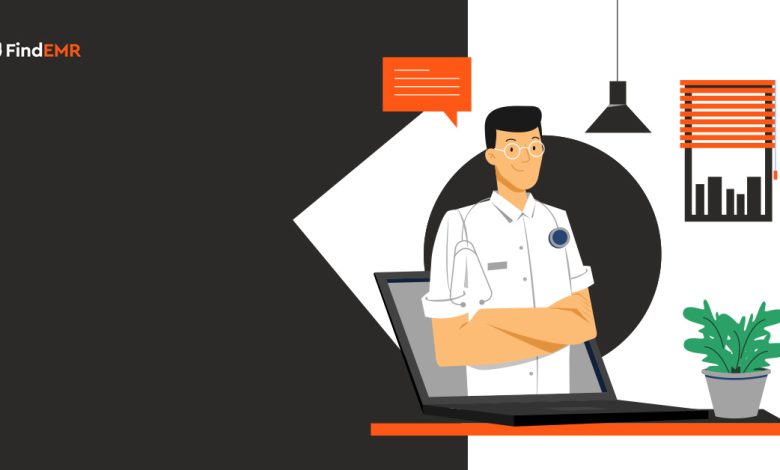NextGen EMR – What You Need to Know

NextGen EMR is ideal for doctors who want to automate their daily tasks and reduce paper clutter. They provide a simple user interface with instant updates, and are highly flexible for conforming to changes in patients’ care. NextGen’s customizable templates and forms enable you to meet your specific charting requirements, without the hassle of physical files. NextGen also offers a patient portal and reporting tools to enhance patient care. Ultimately, NextGen can help you save time and money.
Clinical Tasks
NextGen EMR workflow feature includes a section called Clinical Tasks, where users can create, assign, and update tasks. A link to the patient’s record can be accessed once a task is created or completed. Similarly, users can view appointment information in the section. Depending on the user’s resources, users can view the schedules and appointments of specific physicians and offices. Moreover, users can use this tool to manage and track their patients’ appointments.
NextGen EMR also supports remote patient care facilities. It recognizes the geographical constraints of chronic patients and addresses these barriers with first-class care services. This EMR also offers workflows and patient portal capabilities. It streamlines daily operations by letting medical practitioners focus on their patients. It helps improve overall revenue by improving productivity and efficiency. NextGen EMR has an overall user sentiment rating of 82, based on 403 user reviews.
In addition to the clinical tasks and patient documentation, NextGen EMR also features billing and invoicing services. It addresses the entire billing cycle and ensures that no aspect is neglected. Ultimately, this leads to increased clinical profitability and staff effectiveness. This is where NextGen EMR shines. While NextGen EMR is designed to help doctors with daily workflow, it also makes life easier for administrative staff. With a patient portal, it makes medical practices more accessible to patients and improves care management.
NextGen EHR also streamlines clinical workflows by making it easier for caregivers to capture clinically relevant documentation. This helps physicians see more patients and close encounters faster. Using NextGen Mobile, providers can dictate patient encounters from anywhere and then return the information directly into the EHR fields. NextGen EHR allows for seamless integration with most EHR software providers. It also includes a clinical appointment queue that increases provider productivity.
Reporting Tools
A robust suite of reporting tools is built into NextGen’s EMR. NextGen users can set up recurring reports and run them as needed. These reports are sent directly to an email address, and you can filter them by any number of criteria. Monthly reports are also available. You can save frequently used codes to be accessed later. The reporting tools in NextGen are highly customizable, and even allow you to customize a few aspects of the system.
The reports in NextGen are transaction-based and EHR-based. Advanced practices can get frustrated by canned reports. Exporting data to Excel is time-consuming and requires significant time spent on headers and data cleansing. If you are unable to run your own analysis, NextGen isn’t an option. Alternatively, you can hire a professional NextGen development team. These experts can help you choose the right reporting tools for your NextGen EMR.
NextGen EMR provides two scalable EHR solutions, called Office and Enterprise, which allow you to customize to your practice’s specific needs. The software has rich reporting capabilities and is competitively priced. However, NextGen has the usual drawbacks of other EMRs, such as complicated user interfaces, slow upgrades, and lack of vendor support. But if you are looking for a reliable EMR with rich reporting capabilities, NextGen could be the right fit.
The NextGen Ambulatory EMR includes a home screen where you can view your patients’ past HPIs and medical history. Auto-grow grids allow you to quickly view frequently used information without needing to scroll through the entire EMR. You can also hover over fields and find more details. NextGen Ambulatory EMR is also compatible with primary care pharmacy. These features make the NextGen EMR even more powerful than its predecessors.
Patient Portal
The use of the patient portal in the ED is a key component of the overall experience. It can help patients better understand their conditions and bring this information with them to subsequent health care encounters. However, patients do not always use the patient portal during ED visits. Nonetheless, patients in the ED can benefit from the patient portal in other settings.
They are accessible remotely via the Internet. On the other hand, an on-premise deployment requires a provider’s own server, which comes with a higher one-time perpetual license fee. However, the additional cost is often worth it, because customizing the portal may include changes to registration form templates and custom home page designs. In such cases, the purchase price may not be as high as initially expected.
A new study by Intuit Health found that 72 percent of providers report that patients often complain about repetitive paperwork and lengthy waiting times. While this number may be higher than you might imagine, it is nonetheless worth considering the benefits of patient portals for your practice. For instance, 72 percent of the practices surveyed by Intuit Health’s Patient Portal found that their patient engagement rates improved and patient complaints declined. That’s great news for your practice.
The patient portals in the NextGen EMR can enhance the patient engagement process and facilitate communication with their health care team. Most commonly used patient portal features include appointment scheduling, medication refills, pathology results, radiology reports, and direct messaging with the health care team. The highest percentage of users are women, 25-50 years old, and Caucasian.
Interoperability
Many providers still question the interoperability of their NextGen EMR systems, but the benefits far outweigh the costs. Moreover, interoperability has made it possible to get your patient’s medical history in seconds, and even send it to another department. This means no more manual data entry and calibration of medical equipment. Ultimately, interoperability improves patient care by reducing medical errors and improving patient outcomes.
NextGen Healthcare, the leading ambulatory healthcare technology solutions provider, has announced a partnership with Holon Solutions. NextGen Pre-Services Cost Estimation is one way to meet this new CMS requirement. It helps you offer patients upfront estimates on costs before they undergo a procedure. Further, this feature enables practices to ensure that their patients do not get a surprise bill after receiving treatment.
Deep interoperability can improve patient care, but there are many challenges, such as data-formatting issues. EMR vendors should provide security and data integrity to their clients, but overall satisfaction varies greatly. The KLAS report states that all major EMR vendors are capable of building custom connections successfully. Furthermore, if you’re concerned about security, it’s worth contacting your vendor.
NextGen Enterprise Spring ’21 brings many new features and improvements to its NextGen EMR. The upgraded NextGen Enterprise Spring ’21 telemedicine platform enables patients to securely email their care team and access their medical records at any time. Additionally, NextGen’s Patient Experience Platform gives patients the ability to schedule their own appointments and pre-fill check-in forms prior to visiting a doctor.
Cost
Depending on your needs, NextGen EMR may be expensive or inexpensive, depending on the features you need. Some NextGen features include specialized content, a patient portal, claims clearinghouse, and integrated practice management. NextGen software is easy to use and adapts to your workflow. For more information, visit Software Finder. Prices range from $299 per provider per month to $549 per provider per month. NextGen EMR reviews have a price range of $299 to $549 per provider per month, depending on which plan you choose.
NextGen Enterprise includes an EHR, Practice Management, Revenue Cycle Management, and Electronic Data Exchange (EDI) package. It also includes advanced analytics packages, and clinical content for certain specialties. This integrated solution is becoming a favorite among providers, and NextGen has acquired two other companies to increase its offerings.
When evaluating the cost of NextGen EMR software, it’s best to choose an option that will suit your practice’s size. Then, compare quotes from different providers and choose the one that meets your needs best. If you’re unsure about which NextGen EHR software is best for your practice, try free trials. Read online reviews and get information from the seller before making a decision. If you’re not sure, consider using a demo for a few months. You’ll be glad you did.
NextGen EMR software is easy to use. There’s free training for your staff. While NextGen is not particularly intuitive, it is still easy to use, and it provides useful tools and excellent customer support. Further, NextGen is easy to use, which makes it a great choice for practices that want to automate the medical records process.





